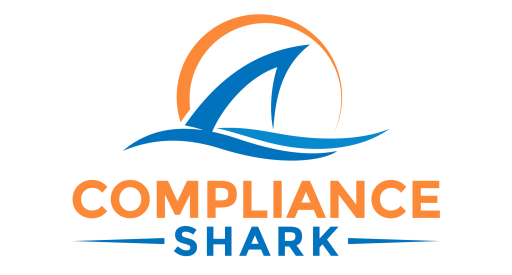Inspections: No News May not Always be Good News
Inspection Day
Hey there, I’m Greg,
Welcome back to the seventh Compliance Shark Newsletter!
Before we dive into this week’s topic, I want to take a moment to recognize the essential work each of you does – whether you’re a hospital director, a laundry owner, or a dedicated team member in between. I've been writing this newsletter for just a few months, but the community we're building here is inspiring.
Our work might not be glamorous, but it’s critical, as I was again reminded when APIC invited Missy Travis and me to shed light on the hidden risks of healthcare linen and hygiene. Each day, approximately one in 31 U.S. patients and one in 43 nursing home residents contracts at least one infection tied to their healthcare, according to the CDC. It’s a reminder of the vital role we play – often invisible until it isn’t.
Inspecting Your Laundry Partner
Now, onto the subject for the week – inspecting your laundry partner.
Once you’ve chosen a laundry provider and things are running smoothly, you might think it’s time to let off the gas and let them work their magic. But here’s the thing: in healthcare laundry, no news isn’t always good news. To ensure a safe and seamless operation, inspections are key.
Now, these shouldn’t be about “Gotcha!” but more about “Let’s make this even better.” Because, ultimately, you’re partners – long term ones as well. And so consistent collaborative inspections build trust, highlight room for improvement, and, most importantly, ensure you’re receiving the best quality linen care to keep your patients safe.
The laundry company I used to run was by no means perfect, and we made our share of mistakes. But we were wildly successful, and customers loved us, partially because of how we handled it when we did. We owned our mistakes, credited the customer almost always, and used the situation to learn and improve.
Here’s your quick-hit guide to inspecting your laundry partner and making sure they’re compliant and up to your standards. Now, this isn’t a whole book (yet…😉), so I’ll keep it high-level and practical as always.
The key steps to Inspecting Your Laundry Partner
1. Start with the SLAs (Service Level Agreements)
Like we mentioned in the previous newsletter – Your SLAs are the foundation of the partnership. Use them to set specific inspection criteria, like on-time delivery rates, linen quality, and fulfillment accuracy. For example, is the linen arriving wrinkle-free, without stains, and on time? These are the basics you’ll want to check first.
2. Inspect Documentation and Policies
Before diving into the facility, take a look at the paperwork. Check their quality assurance policies, maintenance logs, and safety procedures. Look for signed employee training records and policies that are current, specific to their location, and not just "shelfware" for inspections. Make sure there is an agreement with a backup laundry in case your laundry is unable to process. Trust me. It happens!
Pro Tip: Make sure policies include proof of compliance. For example, a housekeeping policy should have cleaning records attached.
3. Do a Facility Walkthrough – From Soil Sort to Pack-Out
Now it’s time to go through the laundry facility, from truck unloading to pack-out and loading for delivery. Note the cleanliness of the space, the flow of goods, and the condition of the equipment.
Look for: Clean surfaces, absence of lint, and organized spaces for clean and soiled linens. Functional separation (i.e., no mixing of clean and dirty linens) is non-negotiable.
4. Talk to the Staff – Are They Engaged?
Laundry staff are your frontline players. Spend time observing their practices and talking to them about their roles. Are they wearing appropriate attire? Are they professional? Engaged staff who understand the importance of their work make all the difference.
Bonus: Ask staff about their training and safety protocols – this will give you insight into their knowledge and compliance with hygiene standards.
5. Check Equipment and Infrastructure
Equipment breakdowns are a major red flag. Look for well-maintained machines and a safe, well-organized plant. If equipment looks worn down or unsafe, it’s time to address it with your provider.
Key points: Positive air pressure in clean areas, structural controls to prevent cross-contamination, and proper guards on machines are must-haves for a well-run facility.
6. Smell, Feel, and Inspect the Linens
Don’t just rely on visual checks. Linens should feel clean, soft, and smell fresh. Ultimately, the quality of these linens directly impacts patient safety and comfort.
Final Thought
Inspections are a powerful tool for making sure you and your laundry provider stay on the same page, working toward a shared goal: patient safety and high-quality service. And regular inspections build a partnership rooted in transparency, accountability, and continuous improvement – the true keys to long-term success.
Until next time,
Greg


